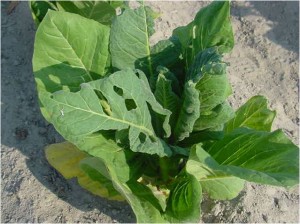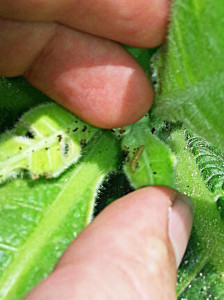Scouting for Tobacco Budworms
go.ncsu.edu/readext?305193
en Español / em Português
El inglés es el idioma de control de esta página. En la medida en que haya algún conflicto entre la traducción al inglés y la traducción, el inglés prevalece.
Al hacer clic en el enlace de traducción se activa un servicio de traducción gratuito para convertir la página al español. Al igual que con cualquier traducción por Internet, la conversión no es sensible al contexto y puede que no traduzca el texto en su significado original. NC State Extension no garantiza la exactitud del texto traducido. Por favor, tenga en cuenta que algunas aplicaciones y/o servicios pueden no funcionar como se espera cuando se traducen.
Português
Inglês é o idioma de controle desta página. Na medida que haja algum conflito entre o texto original em Inglês e a tradução, o Inglês prevalece.
Ao clicar no link de tradução, um serviço gratuito de tradução será ativado para converter a página para o Português. Como em qualquer tradução pela internet, a conversão não é sensivel ao contexto e pode não ocorrer a tradução para o significado orginal. O serviço de Extensão da Carolina do Norte (NC State Extension) não garante a exatidão do texto traduzido. Por favor, observe que algumas funções ou serviços podem não funcionar como esperado após a tradução.
English
English is the controlling language of this page. To the extent there is any conflict between the English text and the translation, English controls.
Clicking on the translation link activates a free translation service to convert the page to Spanish. As with any Internet translation, the conversion is not context-sensitive and may not translate the text to its original meaning. NC State Extension does not guarantee the accuracy of the translated text. Please note that some applications and/or services may not function as expected when translated.
Collapse ▲When to scout for tobacco budworms
Tobacco budworms infestations typically develop between 4 and 8 weeks after transplant. Start scouting for tobacco budworm larvae no later than 4 weeks after transplant and continue weekly until 1 to 2 weeks before topping. Because tobacco budworm larvae prefer to feed on the bud and flowers, they are not pests after topping, and do not need to be included in monitoring efforts after this point.
What part of the plant to scout for tobacco budworms
Tobacco budworm larvae prefer to feed on new growth. Prior to flowering, they feed within the bud. Once plants button and flower, tobacco budworm moths strongly prefer to lay their eggs on flowers, and larvae are most often found in flowers or seed pods.
There is no need to observe lower stalk leaves for tobacco budworms. In fact, holes present on these leaves may be due to old budworm damage and should not be included in scouting records.

Holes in older leaves due to tobacco budworm feeding earlier in the growing season. Note that these holes have smooth edges and that budworm larvae are no longer present on the plant.
Photo: C. Sorenson
How to scout for tobacco budworms
When scouting plants for tobacco budworm larvae, carefully observe the bud. You may need to peel back the leaves to see the inside of the bud.

Small tobacco budworm larva inside bud. Note black “frass”, or insect droppings, near the larva and the small feeding holds. As the leaf grows, these holes may expand, although new damage is not occurring. Photo: Demetri Tsiolkas
“Frass”, or worm droppings, in and around the bud is often a key indicator of budworm infestation. You may also see small holes that have been eaten away in the “tips” or the small leaves around the bud of the plant. Carefully check the bud for tobacco budworm larvae. If you do not observe larvae within the bud, inspect the tops and undersides of leaves immediately around the bud. On cool mornings, larvae may crawl out of the bud. On hot days, they may be deep inside a tightly sealed bud.
Tobacco budworm thresholds
The current economic threshold for tobacco budworms is 10% of observed plants infested with live larvae. Damaged plants without larvae present do not count as infested! Tobacco budworm caterpillars may be killed by parasites, predators, or diseases but still have caused some damage to the plant before dying.
More information
Tobacco budworm biology and identification – Tobacco Growers Information Portal


